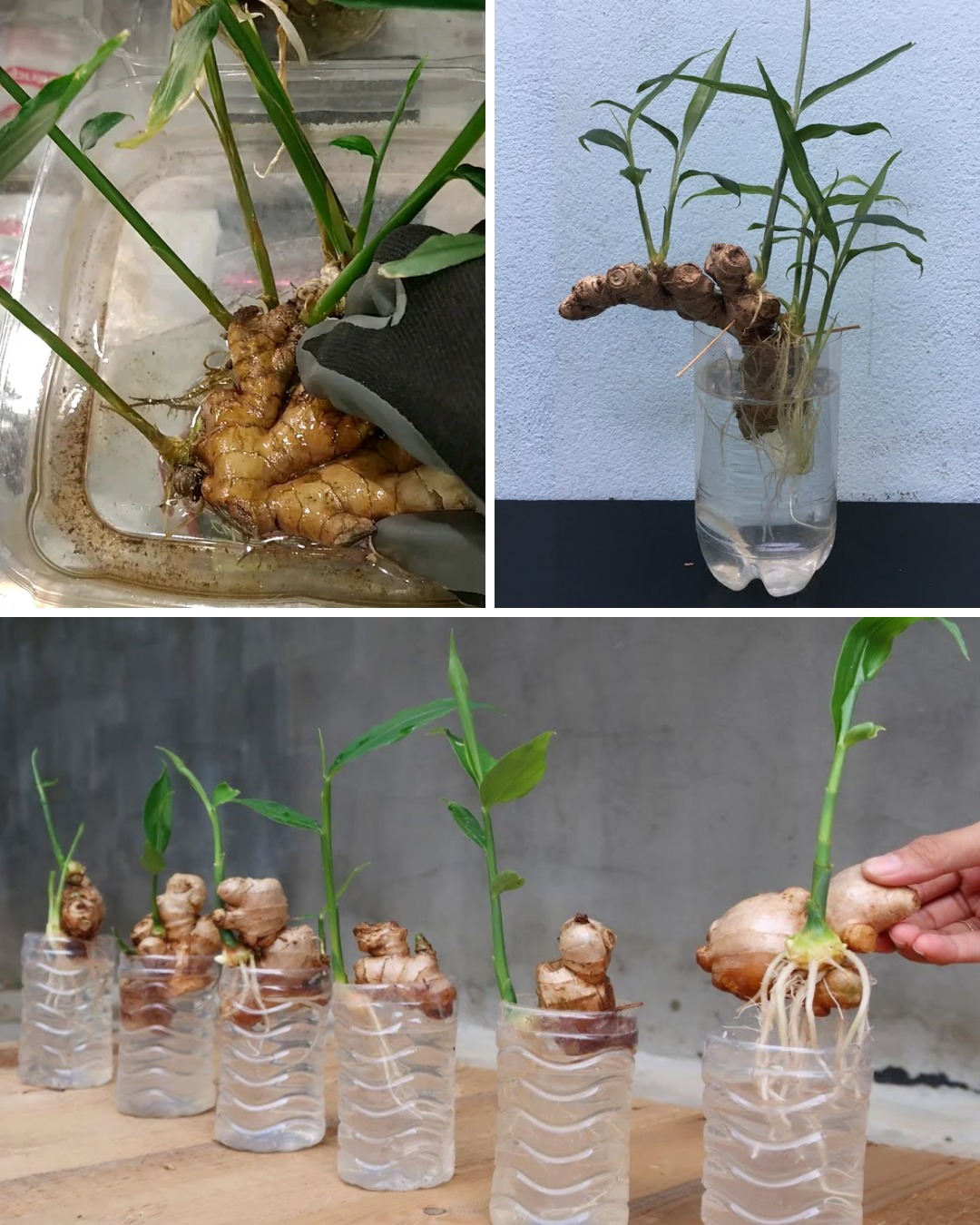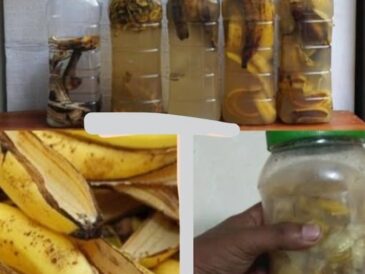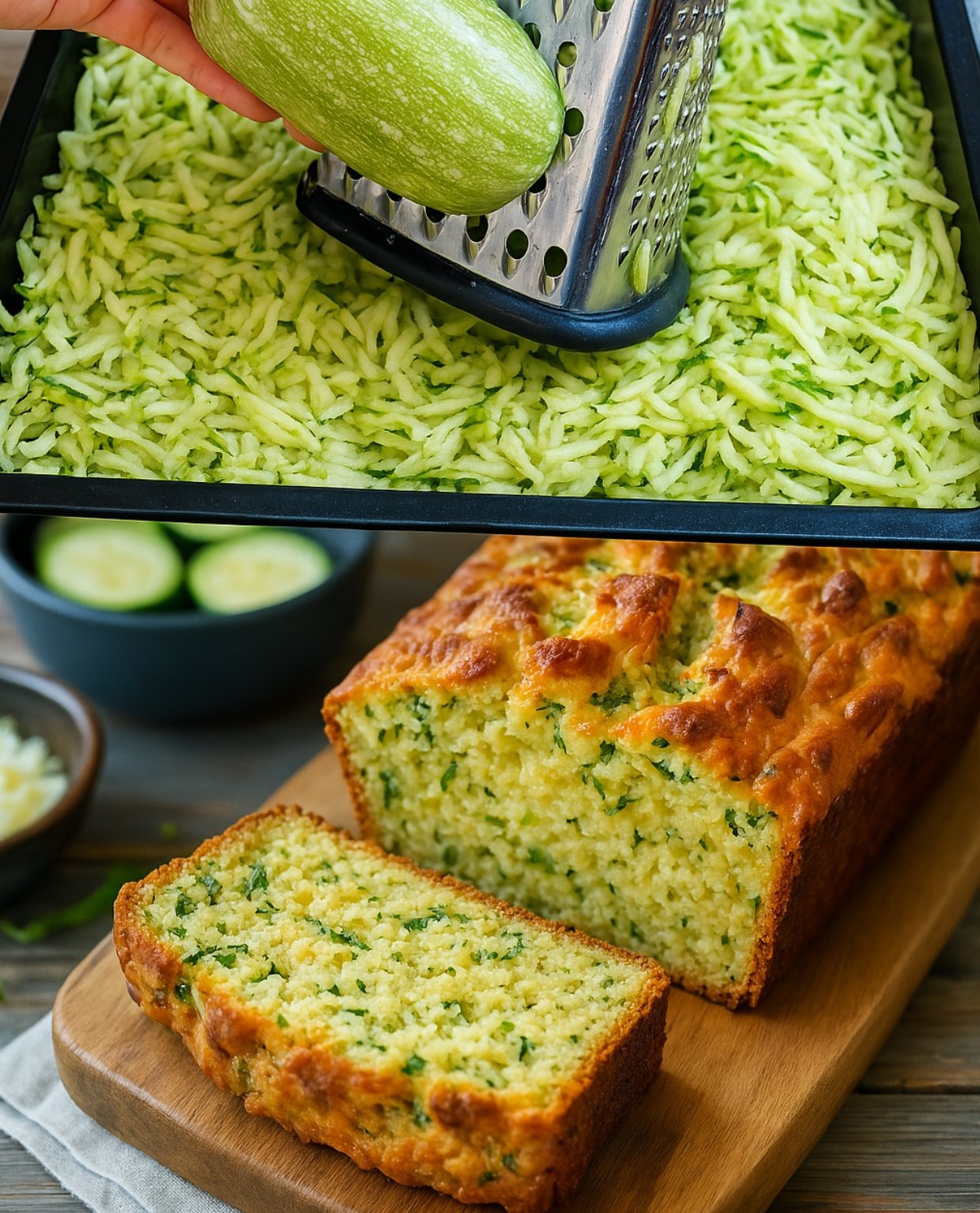Growing ginger in water—also known as hydroponic ginger cultivation—is a clean, sustainable, and surprisingly simple method for home gardeners, beginners, and anyone looking to add a touch of greenery and self-reliance to their kitchen or indoor space. Ginger (Zingiber officinale) is a tropical plant renowned for its culinary, medicinal, and therapeutic properties, and the good news is: you don’t need a garden bed or soil to grow it.
In this guide, you’ll discover everything you need to know about growing ginger in water, from choosing the right rhizome to harvesting and using your homegrown spice. Whether you’re a hobbyist or new to gardening, this step-by-step method is a perfect introduction to hydroponic gardening.
🌱 Why Grow Ginger in Water?
Before we jump into the step-by-step process, let’s understand why hydroponic ginger is such a great idea.
Benefits:
- Soil-Free: No mess, no pests, and no heavy lifting.
- Space-Saving: Ideal for apartments, balconies, and small kitchens.
- Sustainable: Grow your own ginger year-round and reduce dependency on store-bought varieties.
- Educational: It’s a fun, hands-on way to learn about plant biology and hydroponics.
- Cost-Effective: One rhizome can yield a steady supply of ginger over time.
🔍 Step 1: Select a Quality Ginger Rhizome
The journey begins with sourcing the right kind of ginger. The rhizome (what we often call “ginger root”) is not a root at all—it’s a modified underground stem.
Tips for Selecting Ginger:
- Look for Freshness: Choose a rhizome that is plump, firm, and light brown with smooth skin.
- Check for Eyes: Just like potatoes, ginger has growth buds or “eyes.” These are small nodules where new shoots will emerge.
- Go Organic: Preferably select organic ginger. Conventionally grown rhizomes are often treated with growth inhibitors to prevent sprouting during storage.
You can find suitable ginger in organic grocery stores, farmers’ markets, or plant nurseries.
✂️ Step 2: Prepare the Rhizome
Once you’ve sourced your ginger, it’s time to prepare it for hydroponic growth.
How to Prepare:
- Cut into Sections: If the rhizome is large, cut it into 1- to 2-inch pieces. Make sure each piece has at least one or two visible growth buds.
- Dry the Pieces: Allow the cut sections to dry for 6–24 hours in a well-ventilated area. This step is crucial as it forms a protective callus over the cuts, helping to prevent rotting once the rhizome is placed in water.
💧 Step 3: Set Up the Hydroponic System
Now it’s time to set up your mini hydroponic garden.
What You’ll Need:
- Container: Use a shallow, wide, clear container. Transparent containers allow easy monitoring of root growth and water clarity.
- Support System: Small pebbles, marbles, or even a mesh screen can help suspend the ginger pieces just above the water line.
- Water: Fill the container with distilled water or tap water that has been left to sit overnight (to allow chlorine to dissipate).
Assembly Instructions:
- Place your ginger pieces on the support system with the buds facing up.
- Ensure only the bottom part of each rhizome touches the water. Submerging the entire piece can lead to fungal issues or rot.
- Add pebbles if needed to stabilize the rhizome pieces.
☀️ Step 4: Choose the Right Location
Ginger thrives in warm, humid, and slightly shaded environments, mimicking its natural tropical habitat.
Environmental Requirements:
- Temperature: Keep the room temperature between 70–80°F (21–27°C).
- Light: Provide indirect sunlight. Direct sun can overheat the container and encourage algae growth.
- Humidity: If your environment is dry, consider placing a humidity tray nearby or misting the area occasionally.
Indoor kitchens with natural light or a south-facing window with a curtain are ideal locations.
🔄 Step 5: Ongoing Monitoring and Maintenance
Growing ginger in water requires a bit of regular attention to keep the environment optimal.
Weekly Tasks:
- Water Top-Up: Check water levels every 2–3 days to ensure the roots remain submerged.
- Water Change: Replace all the water every 5–7 days to avoid bacterial buildup and algae formation.
- Clean Container: Rinse and clean the container with mild soap monthly to keep it free of slime or deposits.
Fertilization:
- Use a liquid hydroponic fertilizer diluted as per instructions. A balanced N-P-K ratio like 10-10-10 or 5-5-5 works well.
- Apply every 2–3 weeks to support healthy growth and nutrient absorption.
🌿 Step 6: Growth Timeline & Harvesting
What to Expect:
- Week 2–3: You may begin to see green shoots emerging from the buds.
- Month 2–3: Roots will expand significantly into the water, and leaves may begin forming.
- Month 4+: You can begin selective harvesting by cutting off a piece of the rhizome with a sterile knife while leaving the rest intact for continued growth.
Harvesting Tips:
- Always harvest from the edges of the rhizome, leaving the central portion and shoots untouched.
- After each harvest, ensure you return the ginger to its container with fresh water and nutrients.
🧠 Tips for Success
- Avoid Full Submersion: Keep only the base of the rhizome touching water.
- Rotate Occasionally: Rotate the container to ensure even light exposure and growth.
- Use Clean Hands/Tools: When handling ginger or the water system, avoid contamination.
- Don’t Rush: Ginger is slow-growing. Patience pays off with fresh, aromatic harvests.
- Trim Yellow Leaves: If any leaves turn yellow or dry out, trim them to promote healthy new growth.
🌿 Common Problems & How to Fix Them
| Problem | Cause | Solution |
|---|---|---|
| Rotting Rhizome | Fully submerged or no callus | Ensure partial submersion; always dry cuts. |
| Yellowing Leaves | Nutrient deficiency | Add balanced hydroponic fertilizer. |
| Algae in Water | Too much light exposure | Move to indirect light; clean container. |
| No Sprouting | Dormant or treated ginger | Use organic rhizomes with visible eyes. |
🌱 Advantages of Hydroponic Ginger
Let’s revisit some of the unique advantages of water-grown ginger:
- No Soil Needed: Eliminates the risk of soil-borne diseases.
- Year-Round Growth: Control temperature and humidity indoors for non-seasonal cultivation.
- Great for Beginners: A simple introduction to hydroponic gardening.
- Continuous Harvest: Take small pieces as needed without disturbing the plant.
🏡 Beyond the Kitchen: Creative Uses
Besides being a flavorful ingredient in tea, stir-fries, and smoothies, homegrown ginger can be used for:
- Herbal Remedies: Anti-nausea teas, immunity boosters.
- Skincare: Homemade scrubs with grated ginger and honey.
- Natural Cleaning: Ginger-infused vinegar for a fragrant, antibacterial cleaner.
✅ Final Thoughts
Growing ginger in water is more than a gardening project—it’s a rewarding journey into sustainable, low-maintenance food cultivation. By following the simple steps of selecting a good rhizome, setting up a proper hydroponic environment, and maintaining regular care, even complete beginners can successfully grow their own ginger indoors.
Whether you’re looking to save money, reduce waste, or simply enjoy the process of growing your own ingredients, hydroponic ginger is a fantastic way to start. With patience, care, and a little curiosity, you’ll soon have a thriving supply of fresh ginger right at your fingertips—no soil, no fuss, just fresh flavor.





